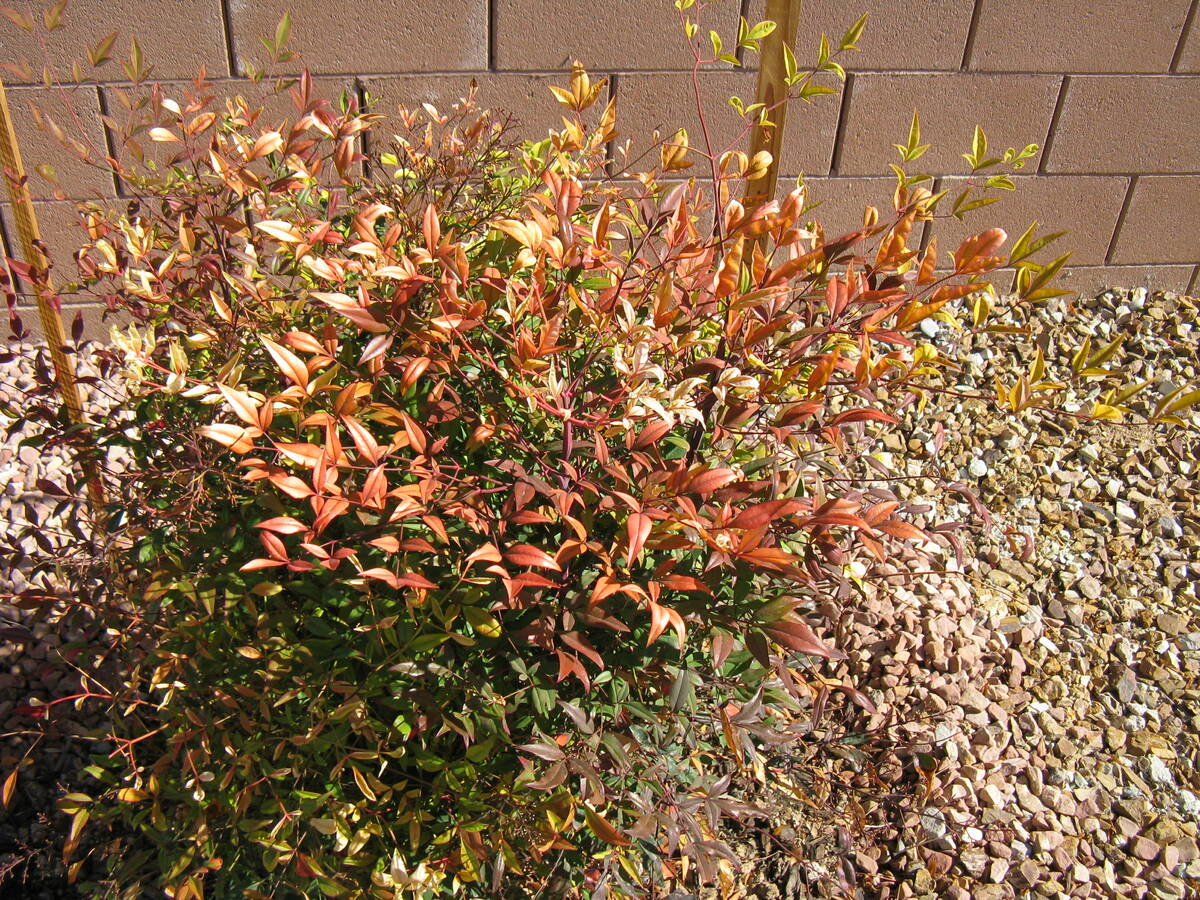Chemical application can harm vegetables
Q: Each summer my raised beds get infested with elm tree roots, and it has a deleterious effect on summer vegetables. I don’t want to harm the trees, but I want to discourage the roots from getting into a 40-foot bed. I’ve tried some mechanical approaches to no avail. I thought I might lay down some copper sulfate, but I haven’t found an application rate that would serve my purpose.
A: There are lots of things that are toxic to plants that are not systemic. Copper is one of them, but so are boron and chlorides. You will see a small amount of damage to the tree from their toxicity — probably discoloration to the leaves on that side. The trick will be to apply chemicals like these far enough from your raised bed so that the roots from these vegetables won’t be harmed.
Usually cutting a trench in the soil 18 inches from the raised bed and about a foot deep will cut the roots of the tree and also can be a place you can sprinkle the minerals. The old-fashioned way is to cut these roots in the same trench about twice a year. None of these mineral approaches like copper, boron and chlorides is systemic, but all of them will be taken up by the tree and transported to the leaves to some degree.
Legally I can’t give a rate of application to do these kinds of things if there’s nothing on the container. But if I were to apply any of these chemicals, I would put a small amount along the trench and add water to the trench to activate it.
Copper, boron and chlorides are minor elements, all three essential to plants, but it shouldn’t take much for them to be toxic and kill the roots. But I am warning you, there will be some discoloration of the leaves.
Q: Can you send me a list of the roses that you pick from?
A: Because I don’t know what color rose you want, fragrant or nonfragrant and many of the other selections only you can make, we can go round and round on which roses to pick. It is true that some roses handle the heat better than others, so selecting a rose variety that handles it well is important.
I use a database such as the one found at weeksroses.com.
Searchable databases of roses allow you to find roses that tolerate our desert high temperatures and low humidity, if they are fragrant or not, if they are climbers or not, what color they are, etc. There are literally hundreds of roses to pick from, including carpet roses, hybrid teas, floribunda.
If you want roses, take a little time and learn about what they are and how to grow them. I will tell you that our unamended desert soils are not good for roses and surrounding them with rock is not a good choice. Once you have made some selections, take a list of 10 or 12 that sound promising with you because a nursery or garden center won’t carry all of them.
Q: I am planning to plant a row of Green Cloud Texas Rangers to block a bad view. I chose that shrub from your list of privacy plants. Your article says to space the plants one-third of their mature height, but there seems to be a lot of variation in that mature height. I want them to grow with minimal pruning, and I want to create a privacy wall. What would you suggest for a spacing distance?
A: These plants are not evergreen but will drop their leaves in the winter. But it is so dense when watered and fertilized once a year, it will create privacy anyway.
Because these desert plants can get about 6 to 8 feet tall when fully grown and you are using them for a privacy screen, I would not plant them about 2½ to 3 feet apart and about the same distance from the fence or whatever divides you from your privacy issue. Remember that in the desert water will dictate where the roots will grow, where wet soils are and damage to walls, stucco and the like.
So initially water them on the edge of the container and new planting soil, and then when they get bigger in a few years add one more emitter for each plant on your side of the hedge and keep the minutes watering the same. Also, they and should be hedge pruned to increase privacy.
Alternatively, they can be watered with drip tubing instead of drip emitters if they are in a row. The minutes will remain the same when first planted and when they get older. All that will change on any irrigation is the number of times you water per week.
Q: Sadly, my landscaper has fallen ill about a month ago. He has been with me for many years. He was supposed to have trimmed my Mediterranean fan palm and two of my other palm trees. I have ( through a recommendation from a good friend) found another landscaper. Can I go ahead and let him trim them, or is it too late in the season? I will not do anything till I hear back from you.
A: Mediterranean fan palm is pretty simple to maintain, and most home landscapers know how to do it. It just involves taking off any old fronds and eliminating suckers that might be coming up. Most of the time the Mediterranean fan palm has three or four suckers that are permanent, and the rest are removed. This is usually done in the spring or summer months, but it could be done now with no problem.
Q: Most of my Texas privets have fungus. I need a strong soluble broad-spectrum fungicide I can use in my EZ-Flo fertilizer tank. I found some on Amazon but not sure which one to get.
A: Diseases are not as common in the desert as they are in some other locations that have rainfall and higher humidity. I even see a difference between the climate in central California and here. We have a much lower humidity.
Your Texas privets problems are most likely not a disease but usually water irrigation-related. They don’t like to be watered every day, and they don’t like to be surrounded by rock. They are very temperamental regarding irrigation and will drop their leaves at the slightest drought. But they do like to have a certain amount of water on a regular basis.
I would say growing them in lawns is your best bet, but surrounding them by rock and drip irrigating them on the south or west sides of the landscape are going to be tough on them. So my gut feeling the problems you’re seeing are probably water-related.
I looked at some of your pictures, and there seems to be a spacing problem and possibly a shade problem as well. Texas privets do not like to be in rock if that’s what they’re growing in.
Q: My lemon. tangerine, plum and apricot trees stopped making fruit; all the leaves fell, and the branches are brittle. They used to do well. I cut the lemon tree at the bottom of its trunk already because it looked dead. Could it possibly grow back from the base of the trunk?
A: Citrus of all forms are subtropical — a bit more sensitive to the cold temperatures of our climate — for the long term. Fruit trees like plums, apricot, peach apple and pear can handle colder weather and are considered temperate fruit trees. Temperate fruit trees are longer-lasting in our eastern Mojave desert climate than subtropical fruit trees and better for the long run, year after year.
Q: I have three heavenly bamboo plants where new growth starts and produces flowers, and then the new growth of leaves and flowers start dying and I end up with no flowers that should eventually turn to red berries in the fall. I ended up with bare stems and branches.
A: There are two things I can think of. One, if they are near a wall that faces south or west, then there is too much heat with that exposure. Secondly, I see they are surrounded by rock. Nandina doesn’t like rock. So off the top of my head, I would guess maybe the heat (they will grow better in cooler locations in the yard) and the rock. If heat isn’t the problem, they will do much better if the soil around them is enriched.
Q: I am planning to cut my oversized fig tree. By not removing the roots, will they stay active and produce new growth? The location is very close to my house and walkway making it very difficult, (and costly) to remove the roots.
A: You can cut fig trees way back, and they will sucker from the base, much like oleander does. They don’t sucker from the roots, but they will sucker from the base or what we call the crown. You can prune them back to a couple of inches off the ground, and they will grow back.
Roots will go where you water them. Just prune it anytime after leaf drop and try to water it away from buildings where possible.
Bob Morris is a horticulture expert and professor emeritus of the University of Nevada, Las Vegas. Visit his blog at xtremehorticulture.blogspot.com. Send questions to Extremehort@aol.com.





























